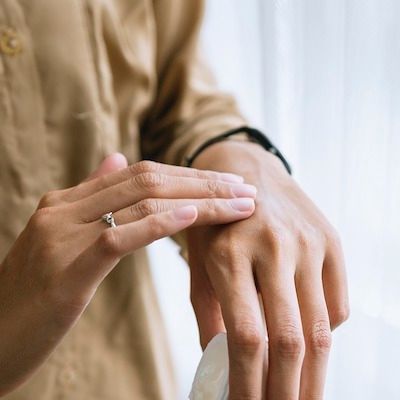Opinion
Video
Impact of Plaque Psoriasis on Quality of Life
Author(s):
Drs Bruce Strober, Benjamin Lockshin, and Jennifer Soung discuss how plaque psoriasis impacts a patient’s quality of life, focusing on patient-reported outcome measurements as well as special areas affected by plaque psoriasis.
Bruce Strober, MD, PhD, FAAD: Hello and welcome to this HCPLive® Peers & Perspectives [episode] titled “Taking the Path to Clear Skin: Targeted Treatment Through IL-23 Inhibition for Plaque Psoriasis.” I am Dr Bruce Strober, clinical professor of dermatology at Yale University School of Medicine [in New Haven, Connecticut]. Joining me today in this discussion are Dr Ben Lockshin, dermatologist and the director of the clinical trial center at DermAssociates in Rockville, Maryland, and Dr Jennifer Soung, dermatologist and director of clinical research at Southern California Dermatology, Orange County, California. Today we will discuss the impact of plaque psoriasis on patients’ quality of life and take a deep dive into inhibitors of interleukin-23, also known as IL-23. These agents have emerged as safe and effective options for plaque psoriasis. Together we will review the trial data and real-world data around these highly effective medications. We will provide an overview on how IL-23 inhibitors are contributing to a rising standard for psoriasis outcomes through skin lesion resolution and improvement of patients’ quality of life. Welcome everyone, let’s get started.
OK, Ben, so psoriasis is systemic illness with high inflammation. We know that body surface area of involvement is how we measure psoriasis; for example, in clinical trials and in the clinic we sometimes do a physician global assessment. But we often can go beyond the objective, and we can look at how psoriasis actually affects patients with regard to quality of life and symptoms. From that point of view, we’ve taken a more refined and, in my opinion, appropriate approach to treatment therapy. Can you expound a little bit on how those concepts are educating you and how you’re educating your peers on how to treat people with moderate to severe psoriasis?
Benjamin Lockshin, MD, FAAD: Thanks, Bruce. I do think there’s been a movement in the past few years to move just from looking at patients’ outcomes as a measurement of success to these PROs or patient-reported outcome measurements to see how happy they are by a DLQI [dermatology life quality index], how much they enjoyed being on the medication by different assessment tools. So taking that as a gestalt into consideration really helped me provide patients and my peers with more information about how the medications tolerated, how this is impacting their life in a meaningful way rather than just looking at how clear their skin is.
Bruce Strober, MD, PhD, FAAD: So a follow on for that, Jennifer, is and I know you lecture about this, often is some of those special areas are affected and a patient with special areas may not reach 10% BSA [body surface area], may not have a PASI [psoriasis area and severity index] score of 12 or 15. What is your perspective on lower BSA psoriasis that nevertheless can profoundly affect a patient?
Jennifer Soung, MD: Right, Bruce, you bring up a really good point. We measure severity in many different ways so we can use our tools objective tools like body surface area or PASI and in other situations we also take into consideration how it impacts their life. And for certain areas that may not meet that body surface area of 10%, these areas can still have a disproportional impact to their quality of life. And when we talk about these areas, we’re referring to areas, for example, the scalp. That may not meet a 10% cutoff of that body surface area but certainly has unique considerations being that topicals are really messy and hard to use,and may not work all the time when the scaling is really thick. Or itching is the primary complaint for these patients, and a lot of times the topicals are just not enough to resolve that. Or we talk about other sensitive skin areas like the face. And using the topicals theory for the long term may not be the most appropriate treatment for sensitive skin in that area. Or genital psoriasis, where there certainly is a small surface area, but in the grand scheme of things can have a huge impact on their quality of life and their intimate relationships with their close ones. So when we think about defining severity of psoriasis, we want to take into consideration location and impact on the patient’s life.
Bruce Strober, MD, PhD, FAAD: I would just add it’s important to get away from hard-and-fast rules of severity and really tailor therapies to your patients. And in this instance, you might actually turn logically to systemic therapies that treat, as I say to the patients, from the inside out and relieve them of having to use the topicals on a daily basis, which most patients probably don’t like to do and aren’t adherent to doing.
Jennifer Soung, MD: I really think that it’s not just that body surface area that we use to simply calculate how severe the patient is, and if the patient has failed topicals, then we’re ready to move on to the next option, and the systemic option is certainly a valid option. And one area I forgot to mention is also hands and feet. That doesn’t meet the classic 10% body surface area, but we know that we do everything with our hands, and especially when patients have plaques on the bottom of their feet, they can’t walk. Simple things like cooking, cleaning, or just being able to walk to the store that they can’t do, so [it can] certainly very debilitating even though it’s a smaller surface area.
Transcript is AI-generated and edited for clarity and readability.





